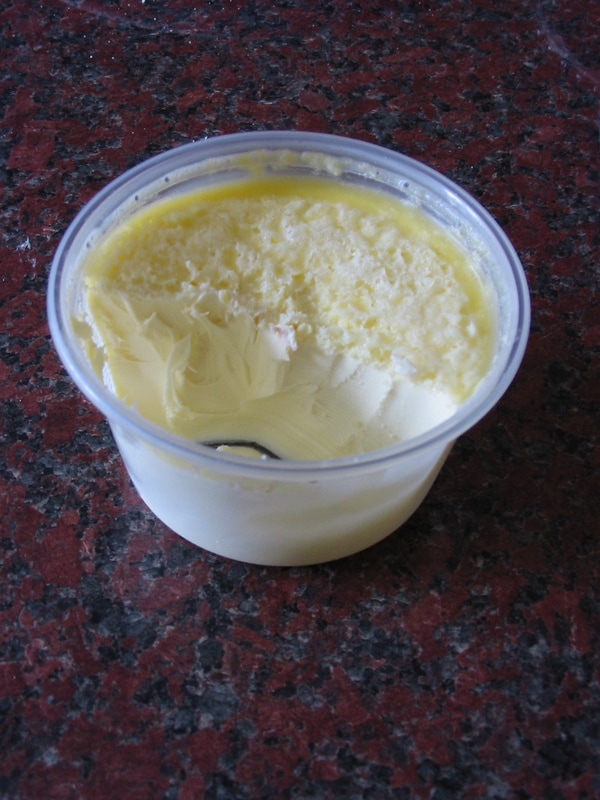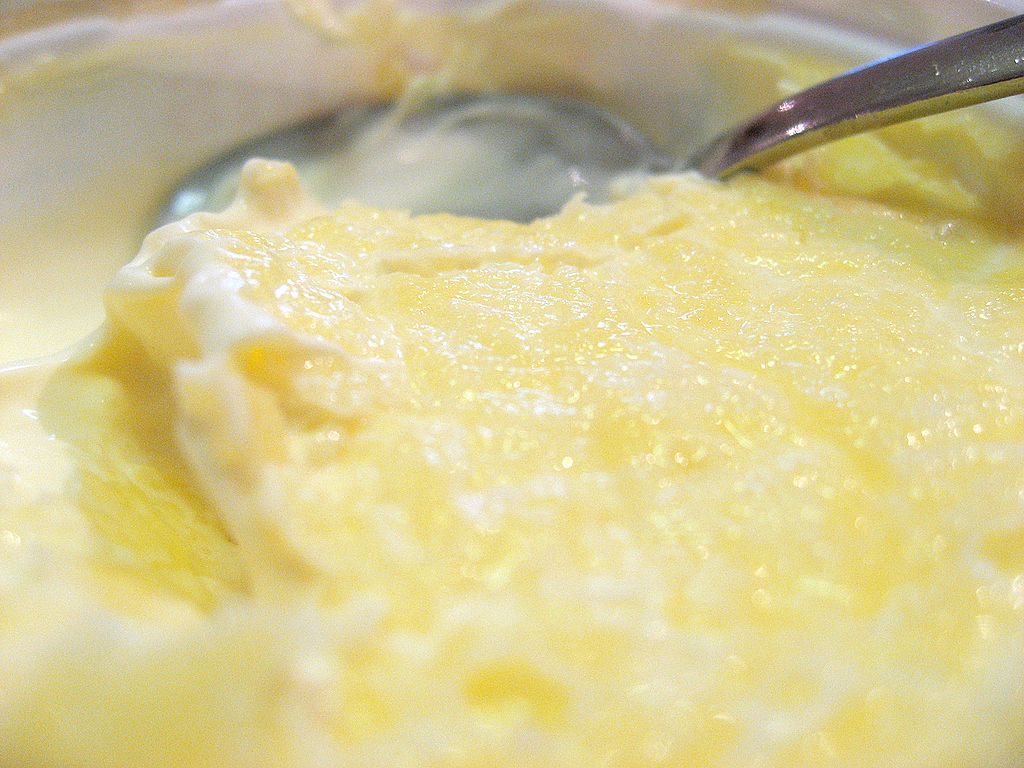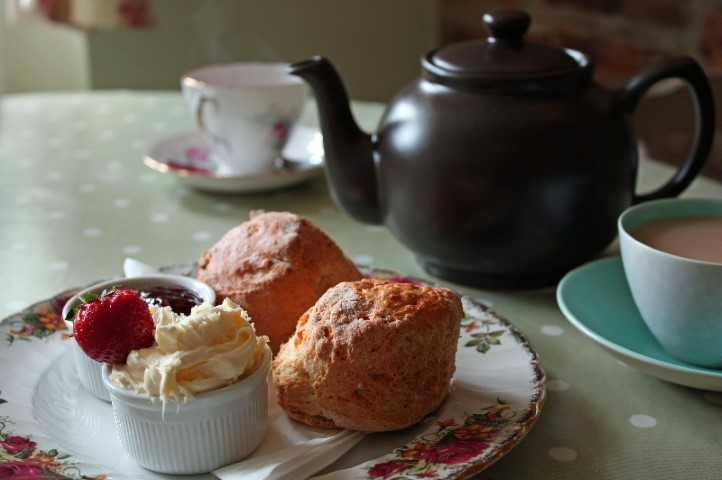It wasn’t so long ago that the only place in the country (or even the world) where you could buy clotted cream was the West Country. These days of course, companies are shipping the beautiful stuff to supermarkets nationwide. However, if you’re ever in short supply, did you realise you can make it at home? In this blog post, we reveal 2 super easy ways of making clotted cream.
First things first – it can be tricky to replicate the exact texture of the shop-bought clotted creams, so don’t expect it to be identical. You should however end up with a genuinely delicious home-made version that will be the perfect accompaniment to sweet treats.
When it comes to cream teas, the custom in Cornwall is to spread the jam on first, followed by the cream. The custom in Devon is vice versa! In our experience, good clotted cream is too thick to be spread like butter, which makes it easier to dollop on top. Whichever way you eat yours, we hope you enjoy some home-made clotted cream via one of these recipes:

Ingredients / Equipment:
- 2 pints double cream (ideally ‘raw’ cream, unpasteurised, from a farm shop, but normal pasteurised cream should work, so long as it isn’t ultra-pasteurised long-life cream).
- A ceramic / Perspex / glass casserole dish for method 1, OR a large, heavy-bottom frying pan for method 2.
Instructions – Method 1:
This method should give you a slightly more flavoursome cream.
- Preheat your oven to 80°C / 175°F (slightly less for fan-assisted). It is important that your oven keeps a regular temperature – old models may not. If in doubt, test with an oven thermometer.
- Empty the cream into the dish so that it is no more than 3 inches deep (but no less than 1).
- Put the dish into the oven uncovered, and leave for 11 – 12 hours. (A good idea to do it over night). Note – the idea is not to bake the cream, but to gently warm it so some of the liquid evaporates. It is better to go for a low temperature for more time, than a high temperature for less.
- Take the dish out of the oven and allow to cool at room temperature. Don’t stir or break into it.
- Cover with cling-film and place it in the fridge for 12 hours.
- There should be a thick, slightly yellow crust.
- This is where there’s a bit of a learning curve. Under the crust, you should get your delicious cream – you can skim this off with the crust, break it up a bit, and put it into jars. However, if the cream is very thick, the crust too solid, and there’s some liquid left – that’s OK – just gently mix the liquid into the rest of the cream. If there a lot of liquid but your cream is already a good consistency , you can decant the liquid and use it in recipes instead of milk (or just put it down the sink!). Use your judgement to try and get that thick consistency you’re looking for.
Instructions – Method 2:
This method is a little quicker but requires more attention.
- Pour your cream into a large, heavy-bottomed frying pan. You want it to heat very gently, evenly and slowly, with as much surface area as possible.
- Put your pan on the hob, and set it to the lowest setting possible –this is very important, as if it’s too warm the cream will bake. Don’t stir, but leave it to sit uncovered and undisturbed.
- Depending on how low your hob will go, after a period of time (up to an hour), a thick layer will form on the top of the cream. Scrape it off and place it into a bowl.
- Wait for another crust to form, and repeat the steps, scraping it into the bowl until you have used up the cream.
- Place the cream into a sealable container and leave it in the fridge for 12 hours.
- After that point, if there is a little excess liquid it can be stirred into the cream or decanted.
NOTES:
The exact timings and final result depend on the fat content of the cream, the reliability of your oven temperature, and the container you use – there is a little trial and error involved, so keep an eye.
The cream should keep for up to 2 weeks in smaller containers.
Let us know if you have your own favoured method of making clotted cream, or if you give our recipes a go!


All guests to our boutique Cornish cottages are treated to a luxury welcome pack, including a delicious local cream tea.
Come and explore the South-West from our peaceful little corner of countryside.


